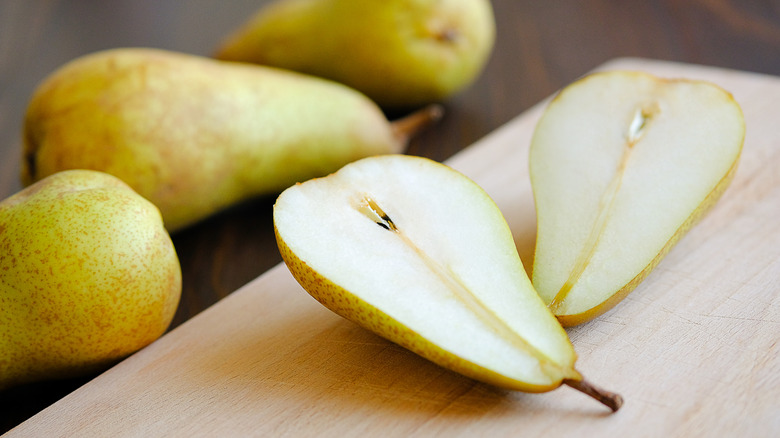Growing A Pear Tree From A Seed Isn't The Fun Gardening Project You Might Imagine
If you dream of a garden filled with tasty treats, there are several things to consider before planting fruit trees. Pears, for example, are less susceptible to pests than the ever-popular apple and are easier to grow, but how you start makes all the difference. Using a cutting or a young tree from a nursery are the best — and simplest — options. Of course, you could be tempted to use seeds taken from a store-bought fruit, but this method isn't generally recommended. Growing a pear tree from seed requires a lot of time, plenty of patience, and acceptance of the fact that the end result may not be a success. Indeed, it's not the fun and easy gardening project you might imagine.
One of the main reasons why you shouldn't try to grow pear trees from seed is that it's simply not a reliable planting method. Regardless of what type of pear you use to harvest the seeds, the pears that end up growing on the tree are not guaranteed to be true to the parent tree's fruits. In short, the appearance and taste of your tree's fruit are unlikely to match those you started with. Worse still, the fruit may be all-out inedible. As Damon Abdi, an assistant professor of landscape horticulture at Louisiana State University's AgCenter, told Martha Stewart, that's because "... the genetics of the seed can vary from the parent plant." However, this isn't the only roadblock to consider. You'll need to prepare the seeds before planting, the seeds may not germinate, and you'll have to grow more than one tree for pollination to occur.
How to grow a pear tree from seed
Apart from the end result being a total surprise, trying to grow a pear tree from scratch is a gamble in several other ways. For one, preparing seeds for planting is a delicate and time-consuming process. You'll need to stratify the seeds in your fridge for three months while constantly tending to their needs. Only then can you plant them in soil and hope that they sprout. Even so, there is no guarantee that they will germinate. What's more, because pear trees are not self-pollinating, you will need to carry out this process for at least two different varieties of pear.
If successful, the seedlings will be ready for planting in a spot that gets over 6 hours of direct sunlight daily, but the guessing game will continue. The hope is that the differing varieties will help pollinate one another, spark flowering, then bear fruit, but this outcome is not a given. For the highest chance of success, you will need to be committed to caring for the sensitive trees with weekly watering, yearly fertilizing, and ongoing pruning of dead leaves and branches. Unfortunately, even with utmost dedication, you won't know if your efforts have been successful for a long time. Indeed, it can take anywhere between 3 and 10 years for pear trees to fruit, if at all. Not to mention, the pears may not be the variety you hoped or, worse still, may not be edible.

